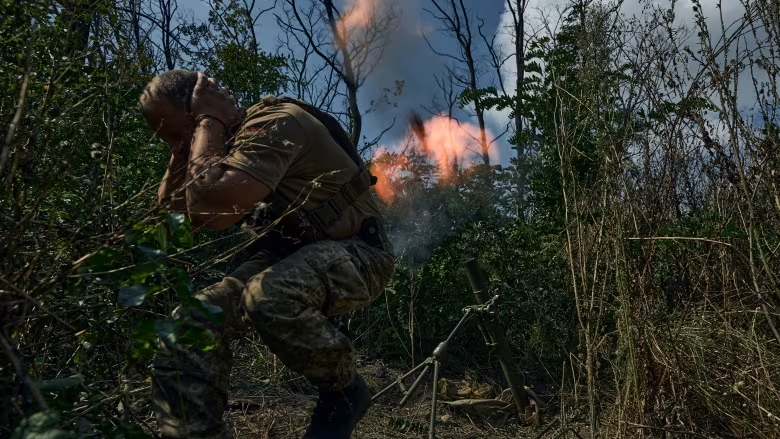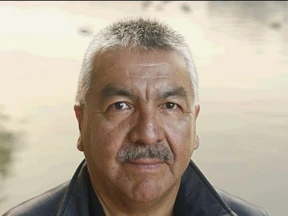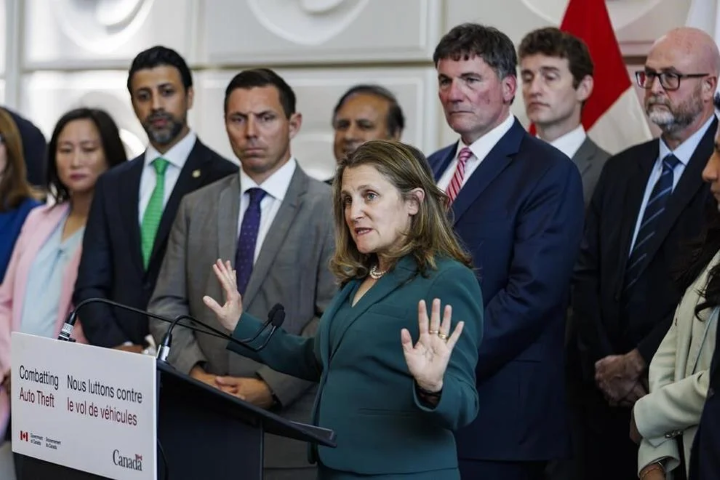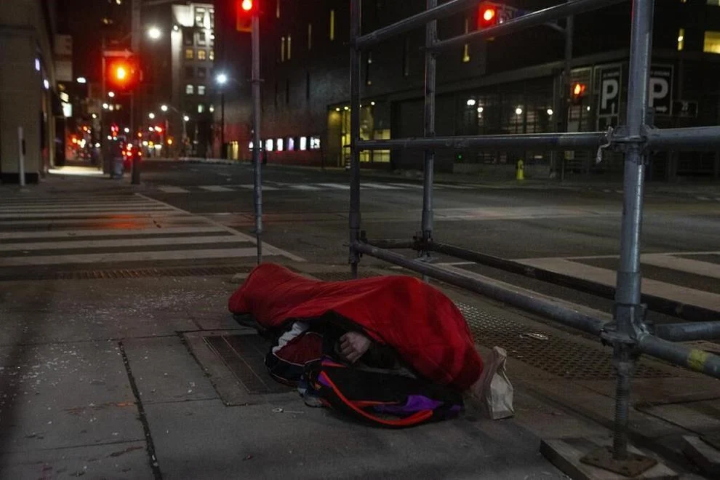
A Ukrainian military personnel launches a mortar towards Russian positions close to Bakhmut in the Donetsk region of Ukraine on September 2, 2023. (Photo by Libkos via AP)
In the wake of a protracted conflict that has left Ukraine grappling with a widening front and a fractured alliance, the words of British philosopher Bertrand Russell echo hauntingly: "War does not determine who is right — only who is left." As the Ukrainian troops entrench themselves across a sprawling 960-kilometre front, the aftermath of a summer counteroffensive reveals a landscape scarred by occupation and shattered hopes.
The optimism that once fueled the international community's support for Ukraine has begun to wane, with roadblocks hindering aid in the U.S. Congress and arsenal shelves in Canada lying bare. Political discord, both domestically and among allies, threatens to undermine the collective effort against the Russian occupation that seized 20% of Ukraine's territory.
Matthew Schmidt, an Eastern Europe expert, contends that Ukraine's capacity for large-scale offensives has reached its limits, a sentiment shared by General Valeriy Zaluzhnyi, the Ukrainian Armed Forces' commander in chief. Zelenskyy, Ukraine's president, clings to the hope of a complete Russian withdrawal, but the stark reality, as articulated by Zaluzhnyi, suggests a looming stalemate.
The shift in Russia's strategy from swift conquest to a war of attrition underscores the fragile nature of Western solidarity. Russian President Vladimir Putin, banking on the West's short attention span and potential political shifts, aims to erode support for Ukraine. Hostile leaders like Hungary's Viktor Orban further complicate the situation, contributing to the unraveling of a united front.
As the Ukrainian offensive loses momentum, concerns mount about the nation's ability to sustain the war effort. Schmidt warns that without a new U.S. aid package, Ukraine's resources may dry up as early as March. The far-right in the U.S. and Canada characterizes continued support for Kyiv as a drain on resources, perpetuating a narrative that Schmidt dismisses as a misleading omission.
Phillip Karber, an expert in Russian war strategy, emphasizes the strategic significance of battles like Avdiivka in the eastern Donetsk region. With the front characterized by stasis, major Russian gains are hampered by a high level of casualties. However, the protracted conflict has taken a toll on Ukraine, with an estimated 250,000 military casualties and recruitment challenges looming.
The political machinations in the U.S. Congress and allied hesitations, particularly in Canada, pose a threat to Ukraine's resilience. The delay in boosting ammunition production and a funding fight in Washington jeopardize the supply of critical resources. Despite earlier promises of advanced weaponry, the inability to provide sufficient ammunition hampers Ukraine's military effectiveness.
As the conflict enters a dangerous new phase, the potential for a negotiated settlement or ceasefire in the coming year looms large. The U.K. Ministry of Defence's recent assessment suggests that Ukraine has shifted to a defensive posture, with efforts to fortify its positions along the front. The ongoing challenges underscore the delicate balance between sustaining Ukraine's resilience and the erosion of international support in the face of a relentless adversary.















